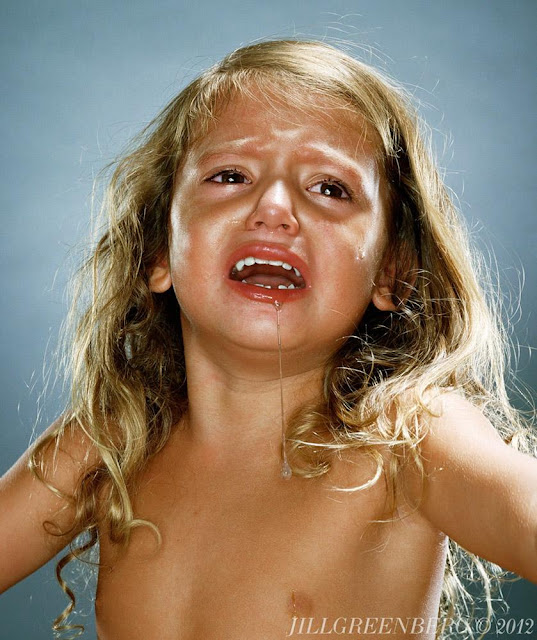Jill Greenberg's passion for photography started at an early age, and she pursued this passion through her photography degree later in her college years. She then worked for different publications in New York and Los Angeles, focusing mostly on portraiture work. As her career developed, she began to use more of the photographic style she's now known for: strong (almost harsh) direct lighting and heavy post-processing. This style of lighting is most evident in her project, "End Times"
Jill Greenberg's passion for photography started at an early age, and she pursued this passion through her photography degree later in her college years. She then worked for different publications in New York and Los Angeles, focusing mostly on portraiture work. As her career developed, she began to use more of the photographic style she's now known for: strong (almost harsh) direct lighting and heavy post-processing. This style of lighting is most evident in her project, "End Times".
In "End Times", Greenberg gathered dozens of different children and had them pose in extremely distressing moments. These digitally enhanced images show the toddlers crying and wailing, many teary-eyed or screaming, or in many cases, both.
In order to get these kids into to show the strong emotions in the images, Greenberg enticed them by showing them their toys or offering candy, and then taking these treats away. This "baiting" method obviously worked as these images show the rawest possible emotions capable of a child. On one hand, Greenberg managed to bring out the real and primal feelings of children, but on the other hand, her methods have been questioned as to whether or not they're ethical.
The photographer's method of enticing her subjects with candy and then taking them away might not be such a big deal if her subjects were adults, but because they were children, a lot of controversy arose when these images were first exhibited. In order to get dozens of the same effect, Greenberg had to do the same thing over and over again. It's bad enough to have to make one child cry, but to have to make a whole group of toddlers break down in tears might be comparable to child abuse or torture.
As with Jonathan Hobin's child reenactments of tragic events, the medium in Greenberg's case has overshadowed the message. In "End Times", she wanted to show her disdain for then President G. Bush and his administration. Greenberg felt that the powerfully dramatic tantrums that toddlers make would be the perfect medium for her message. She even titled her images in the spirit of her intent, with names such as "Shock" and "Grand Old Party" and "Four More Years", as if to show how these kids would react to these names.
The controversial nature of Greenberg's project might not be as far reaching as Hollywood photographer Terry Richardson's or visual artist Richard Prince's, or even the previously featured work of Jonathan Hobin, but they call for a moment of reflection on what passes for ethical both in terms of the photographic results and the way in which they were made. Still, while the pain and suffering of these children were only momentary, the remarkable images, and more importantly the message behind them are preserved for posterity.
This is Jill Greenberg's website with the "End Times" project also on the site. For a more lighthearted, but equally controversial photography series featuring children, check out Jonathan Hobin's "In The Playroom". For something that's sure to provoke no controversy, have a look at Anne Geddes' uber cute Babies wallpapers. The End Times project is available as a hardcopy Jill Greenberg: End Times, with her previous works available as Monkey Portraits and Bear Portraits.






